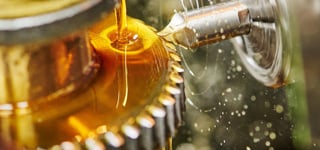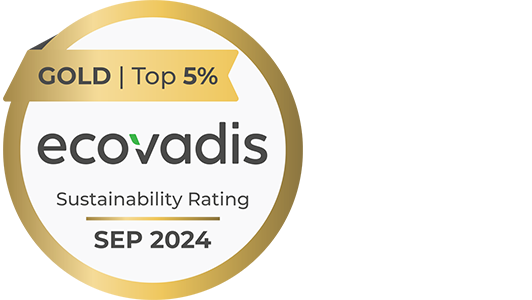
Pentanes are mainly known as blowing agents for insulation materials. But they can do even more: the three isomers n-Pentane, iso-Pentane and Cyclopentane can each show their advantages in a wide variety of applications, either on their own or as a blend. In this article you can read about the differences between the three Pentane isomers and the applications in which they have proven to be particularly useful.
|
For quick readers: ⊕ Where do Pentanes come from?⊕ What are the differences between n-Pentane, iso-Pentane and Cyclopentane?⊕ In which applications are the different Pentane types most suitable? |
Where do Pentanes come from?
Pentanes are all saturated hydrocarbons that have five carbon atoms. n-Pentane and iso-Pentane occur naturally in crude oil and as a by-product of natural gas production. Cyclopentane, a ring-shaped molecule much sought after by the industry, is found more in naphtha (crude petrol), which is obtained in refineries from so-called cracking processes.
Naphtha contains varying amounts of Pentanes, depending on the origin of the crude oil, the construction of the refinery and the management of the processes. They are the first hydrocarbons to be liquid at room temperature.
iso-Pentane has the lowest boiling point at 29 °C, followed by n (35 °C) and Cyclopentane (49 °C). Due to the low boiling points and the large interval between them, the three isomers of Pentane can be easily separated from each other.
Pentane production: What are the differences between n-Pentane, iso-Pentane and Cyclopentane?
Due to their property profile, iso-Pentane, n and Cyclopentane can show their advantages in a wide variety of applications. Moreover, the three isomers can be mixed with each other or with other chemical components. In this way, it is possible to create Pentane blends that fulfil the desired requirement profile in the best possible way.
Application area iso-Pentane
iso-Pentane is almost insoluble in water, but shows very good solubility or unlimited miscibility with many organic solvents such as paraffins, ethers, esters, aromatics or chlorinated hydrocarbons. Therefore, the product is suitable for a wide range of applications:
- Personal care products such as shaving foam and shower gel
- Working medium in geothermal plants
- Non-polar solvent with very high volatility
- Process medium for polyethylene (PE, LLDPE) and polypropylene (PP)
Application area n-Pentane
Chemically and physically, n-Pentane behaves very similarly to iso-Pentane. Its boiling point is higher (35 °C). Instead of ammonia or fluorinated hydrocarbons, n-Pentane can be used as a refrigerant in air conditioning or refrigeration systems.
- Very non-polar solvent
- Process medium in the production of polyethylene, especially LLDPE
- Refrigerant R601
Area of application Cyclopentane
Cyclopentane has significantly different properties than the other two isomers of Pentane. Therefore, it is very rarely used as a solvent or as a basic building block in fine chemicals. Its unique structure, combined with a relatively low boiling point (49 °C) make it a preferred blowing agent in the production of insulating materials.
- Blowing agent for Polyurethane foams (PU foams).
- Insulation boards for building insulation
- Refrigerators, freezers
- Refrigeration logistics
- Solvents
- Fine chemical
Where is Pentane used? For which applications are the different isomers of Pentane suitable?
Cosmetics and care products
Very pure, aromatic-free iso-Pentane is used in shaving cream or shower gel from cans, as it evaporates through body temperature and makes the products foam up very finely and creamy. In return, care is taken during production to ensure that the product is odourless.
Geothermal plants
They are an essential contribution to renewable energy supply. Heat is extracted from the ground and converted into heating energy for buildings in a heat pump. iso-Pentane can be used as a process medium in such heat pumps.
Process medium in the production of Polyethylene (PE) and Polypropylene (PP)
Polyethylene (PE) is the most widely produced plastic in the world. Modern plants polymerise the ethylene in the gas phase. This must be cooled after the reaction so that the dust-fine plastic beads become solid and do not stick to the plant. Liquid iso-Pentane is injected into the gas stream. It evaporates and thus cools the reaction. The iso-Pentane can then be condensed and reused. It can also be used as a process medium for Polypropylene (PP), which is produced in the same way in the gas phase.
Cooling agent
Chemically and physically, n-Pentane behaves very similarly to iso-Pentane. Its boiling point is higher (35 °C). Instead of ammonia or fluorinated hydrocarbons, n-Pentane can be used as a cooling agent (R601) in air conditioning or refrigeration systems.
Insulation materials: Polyurethane and Polystyrene insulation boards
When insulation plays an important role, Pentanes - above all cyclopentane - are used as blowing agents in Polyurethane (PU) and Polyisocyanurate (PIR) formulations. Typical examples are the household appliance and food industry (refrigerators, freezers, cold storage), the construction industry (residential and office buildings) and industrial applications such as piping.
Cyclopentane provides maximum and long-lasting insulation performance in the smallest of spaces. This is due to the fact that the Cyclopentane remains partially in the cells of the PU or PIR foam as a cell gas after foaming. Therefore, this type of Pentane is ideal for cooling devices and thin insulation panels made of Polyurethane (PU).
Significantly thicker than Polyurethane insulation boards are insulation boards made of Polystyrene (EPS, XPS), also known under the brand name Styropor®. They have a lower insulating effect. In this case, an n or iso-Pentane or a corresponding Pentane blend is usually used as a blowing agent to foam the Polystyrene.
Packaging material
Extruded Polystyrene (XPS) is produced from polymer granulate and Pentane as blowing agent. This is used in the packaging industry, for example as the well-known packaging chips.
Find out more here:
- Tailor-made Pentane blends from Haltermann Carless
- Free Study: New ternary Pentane blends and their effect on PU and PIR foams
- Pentanes for insulation materials in the construction industry
Conclusion
Due to their physical properties, iso-Pentane, n-Pentane and Cyclopentane perform their advantages in a wide variety of applications. Moreover, the three isomers can be blended with each other or with other chemical components to serve a particular requirement profile, which is characterised by performance, quality or cost efficiency. When looking for a suitable manufacturer, you should therefore check whether your supplier, such as Haltermann Carless, can produce all three isomers to be able to provide you with the right Pentane type or Pentane blend for your application.
Good to know: Haltermann Carless is the world's only manufacturer of all three types of Pentane and the largest producer of Cyclopentane. To meet the increasing demand for high-purity Cyclopentane, the company has invested in a modern production plant. The hydrogenation unit in Speyer, Germany, reliably provides the global insulation industry with high capacities.
What are the benefits of ternary pentane blends for the PU and PIR industry? Download our free study now!





















